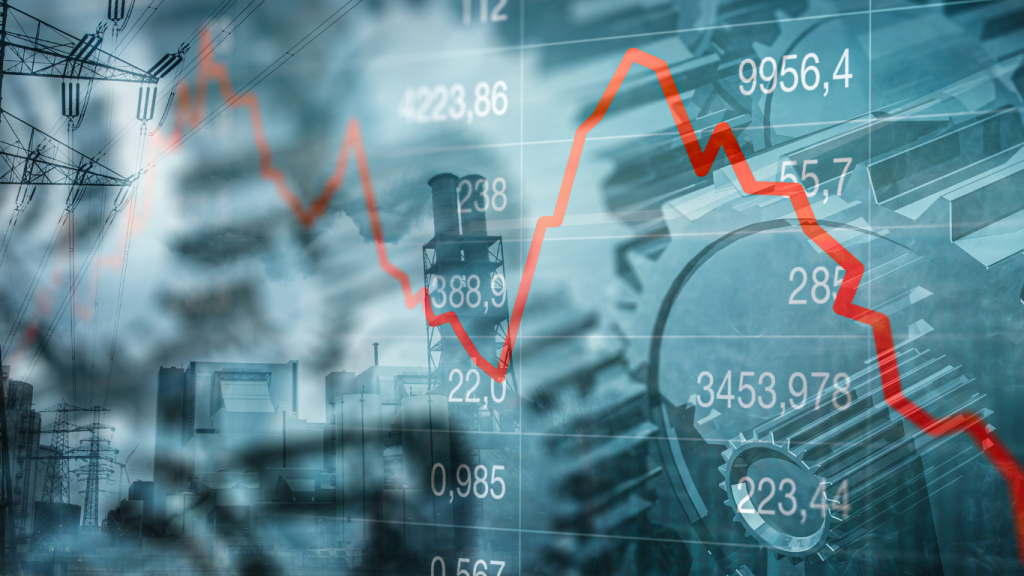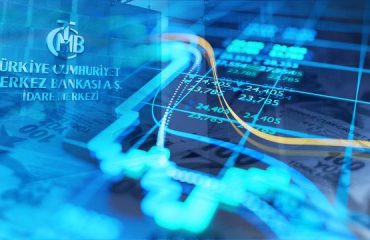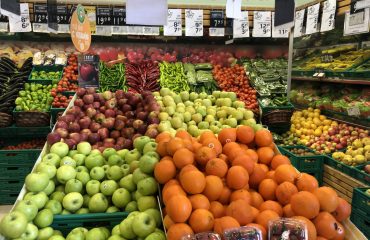

“How will the economy be shaped in 2023? It is helpful to try to answer this question by dividing 2023 into two periods: pre-election and post-election. Judging by the statements already made by the Table of the Six, it is highly possible to return to a positive environment. If the People’s Alliance wins the election, there are three options.”
How will Turkey’s economy perform in 2023? It is a relatively complex question since we have been in an inexplicable period regarding economic conditions, and a critical election is to approach. Hence, it would be more appropriate to try to answer this question by dividing 2023 into two periods: before and after the election.
First, let us focus on ‘post-election’. What might happen in the economy after the election is closely related to whether the economic policy will be normalized.
Let me summarize what I mean by ‘normalization of the economic policy.’
Post-election option one: Normalizing the economic policy
First comes the policies aimed at creating macroeconomic stability: the Central Bank’s return to its primary objective –its fight against inflation. Removal of all constraints that have the potential to distort the balance sheet of the banking sector. Begin to reduce and gradually eliminate black holes in the budget (such as abandoning the currency-protected deposit system and reviewing income guarantees stemming from the private-public partnership projects).
Gradual reduction of the public debt to its citizens in foreign currency. Implementation of a budget that prioritizes the rights of the poor and the low-income earners. The unemployment insurance fund should be used for its primary purpose.
The second group consists of structural reforms. Establishing an institutional structure that will provide confidence in the announced statistics. Rewriting the procurement law from scratch. Setting up a central institution that will monitor the Turkish and world economy, design economic policy alternatives, and analyze the implemented policies’ impact. Making legislative changes that will restore the independence of the Central Bank. Taking similar steps for institutions such as the Banking Regulation and Supervision Agency and the Competition Authority. Establishing an independent judicial system that works justly and quickly is essential.
Is normalization crucial?
The current economic policy is unsustainable. Although inflation will gradually decrease for a few more months until June, in post-election conditions, it will still be among the highest worldwide. The interest rates far below the inflation rate penalize savings.
Moreover, in 2022, the foreign trade deficit exceeded 100 billion dollars, the current account deficit is approaching 45 billion dollars, and our foreign debt due in 2023 has reached almost 190 billion dollars. The election economy will likely increase the foreign trade deficit and, consequently, the current account deficit even more.
Major central banks are raising policy rates, which will most likely continue in the first half of the year. When the risk premium is high, and the major central banks are increasing interest rates, some borrowers who do not feel like paying high costs may aspire to borrow less than due. Likewise, some corporations may not be able to borrow money even if they intend to.
Such developments could raise demand for foreign currency and lead to a depreciation pressure on the Turkish lira.
Second option for post-election
When the interest rate tool cannot be used to reduce the demand for foreign currency, pressures under the heading of ‘macro-prudential measures’ are imposed on the banks, which are, in fact, not prudential and thus deteriorate their balance sheets.
Although the implemented economic policy is not sustainable, one should not conclude that the only alternative is the first alternative summarized above. Undoubtedly, there are other options, and the second option is to turn the current unsustainable policy into a sustainable one by preserving its central axis.
What is the central axis of the current economic policy? At the core of the current policy lies restrictions on capital flows. The start of this process was the 2018-19 crisis. The trauma of massive job losses and a sharp decline in economic activity caused by a sudden stop in capital flows stemming mainly from the threatening tweet messages of the US President led economic policymakers to search for ways to decrease the presence of foreign financial investors in Turkey.
How could this happen?
The sound way to get out of this situation was to decrease the dependence of the Turkish economy on foreign debt. However, there was no sound ongoing plan to eliminate this dependence; instead, some efforts started to be made in vain.
Apart from the U-turns in between, the second stage came with the steps taken by the Central Bank to reduce the current account deficit. Consequently, the authorities tried to decrease the value of the Turkish lira to render the Turkish manufacturers competitive. The Central Bank started to cut the policy rate despite high inflation. When the policy rate fell sharply, the exchange rate jumped, and Turkey came to the edge of crisis. What happened next is well known: Lots of decisions one after the other; the following problem came up today, let us solve it; when that new decision raises other issues, more recent resolutions to solve them, and so forth.
The critical point is this: Restrictions on capital flows have increased sharply, and loan and deposit interest rates and sectors that can reach credit have begun to be determined centrally.
There are two more options
In short, the second option is to eliminate the loopholes in the current unsustainable policy framework to make it sustainable. Note that this non-market-friendly economic policy framework needs an exceptionally well-thought design. Is such an economic policy framework worthy? How do we decide whether it is commendable without such a framework?
Apart from the first two options, there are two more options. In fact, they are ‘half’ options. The first half option is to try to maintain the current unsustainable economic policy called the Turkish Economy Model. There is no need to dwell on it; this policy is unquestionably unsound. I discuss (once again) why it is not sustainable in the ‘pre-election’ section below.
The post-election second-half option is a policy framework lacking the first option’s (the normalization option) structural part -especially establishing an independent judiciary and the Central Bank part.
Can the Table of the Six return to rationality?
Judging by the statements so far, a return to rationality by the Table of the Six is highly possible in post-election period.
If the People’s Alliance wins the election, there are three options. The first alternative for the People’s Alliance is to take only steps toward stabilization. The complete set of the normalization option is not on the table given that the need for the structural part of this option arose from policies implemented so far –significantly undermining the independence of the judiciary and the Central Bank. How could one expect a U-turn from that route?
Therefore, it may come to the fore to turn to the second half option. The primary constraint is the lack of human capital to design a comprehensive non-market-friendly policy set.
This Alliance’s third alternative is to maintain the current economic policy –the first half option- despite its unsustainability in post-election period. Given that the current policy framework is unsustainable, a transition to the other two options of the Alliance policy will be inevitable.
Therefore, either at the end of this road or from the beginning, the current policy, called the Turkish Economy Model, must be placed in a consistent framework that will make it sustainable, which is the second option I mentioned above. However, currently, there is no such publicly-known framework, and it is highly doubtful whether there is a capacity in the Alliance to design it.
What does normalization promise?
The first option promises normalization in fiscal, monetary, and financial stability policies. The importance of institutions will eventually increase, and their involvement in policy design will be more visible. It will be a period in which the risk premium goes down significantly, the depreciation pressures on the Turkish lira vanish, critical interest rates decrease without interventions, and a disinflation process starts- first to approximately 20 percent from 40-45 percent in a year. And then single-digit inflation rates.
Such an environment will be growth and employment friendly. In short, it will likely create an environment for the Turkish economy to graduate from the high-middle-income group.
Human capital issue
It is hard to say anything about the second option because it seems that the necessary human capital to design such a comprehensive plan is non-existent. If there were such an intellectual capacity, the decisions of the last few years would not have been taken with the logic of “make it up as you go along,” and the Turkish economy would not have frequently come to the threshold of crises.
The first of the ‘half’ alternatives was to try to maintain the current unsustainable situation, the consequences of which I briefly discuss below under the ‘pre-election’ heading. Under the second half option, there will be a lower inflation and risk premium. However, such improvements will be pretty limited compared to the first scenario, and both growth and employment are expected to follow a more volatile path. Moreover, this option will die after a while since this framework lacks essential structural reforms.
Pre-election uncertainty
Setting up pre-election scenarios is not as painless as post-election scenarios, given that it is not easy to judge how long the current unsustainable process could continue. There is high sovereign risk and high inflation, and authorities try to control the value of the lira through artificial interventions. Additionally, the ultra-low savings rates punish savers, and the economy is stagnant.
Throwing money will be around to get Turkey out of the economic slowdown until the elections. However, the main obstacle to such an election policy is the sharp rise in foreign currency demand that it would trigger. How this constraint becomes less binding depends on how much new foreign debt Turkey can find.
We cannot know how much new foreign debt can be obtained, especially from state-to-state debt. Overall, there is substantial uncertainty.


